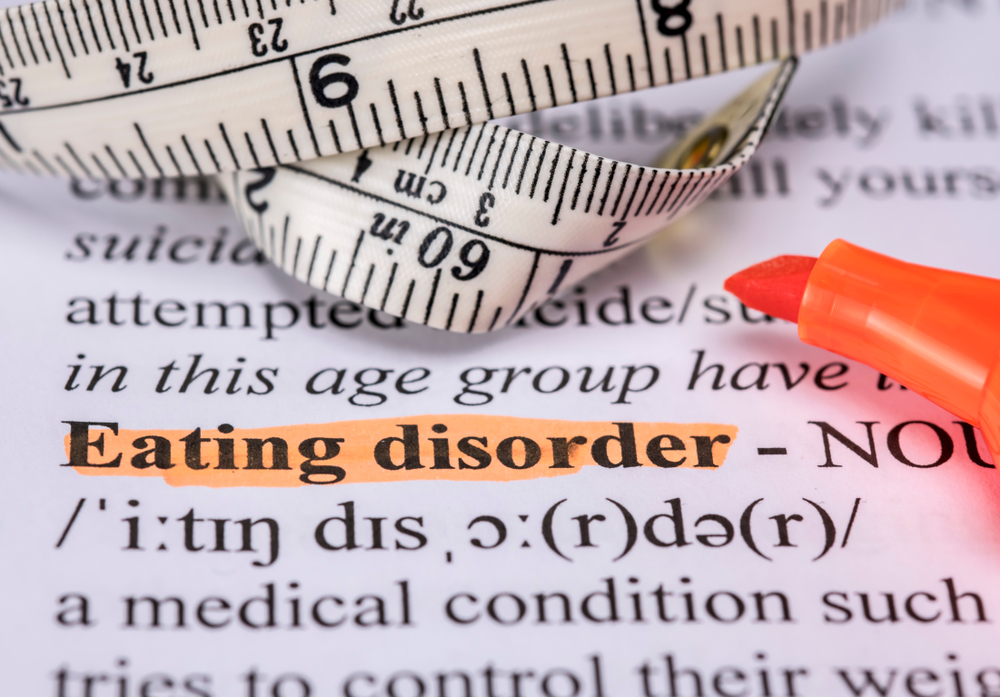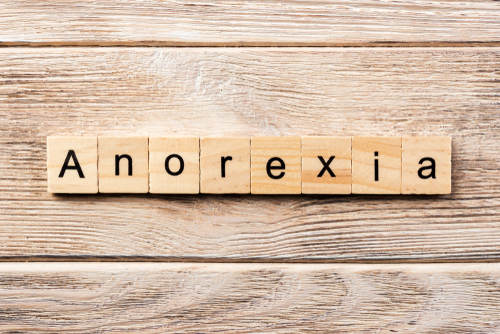Eating disorders are defined by the American Psychiatric Association as “behavioral conditions characterized by severe and persistent disturbance in eating behaviors and associated distressing thoughts and emotions.” There are several different types and each are recognized as chronic psychological conditions listed in the Diagnostic and Statistical Manual of Mental Disorders, Fifth Edition (DSM-5) under the Disorder Class: Feeding and Eating Disorders. The pervasive symptoms associated with any type of eating disorder can cause adverse physiological consequences and interfere with one’s ability to function optimally in daily life. Experts consider anorexia nervosa, colloquially known as anorexia, to be the most severe type of eating disorder because it has the highest mortality rate of any psychiatric disorder.
Anorexia
Anorexia is characterized by “an abnormally low body weight, an intense fear of gaining weight and a distorted perception of weight.” An individual struggling with anorexia may exhibit behavioral warning signs such as skipping meals, over-exercising, obsessively reading nutritional information, constantly weighing themselves, regularly making excuses not to eat, denial of a problem despite excessive weight loss, etc. People with anorexia engage in a cycle of self-starvation that often result in malnutrition including a lack of essential minerals and nutrients. When an individual with anorexia becomes severely malnourished, every organ in his or her body can suffer irreparable damage. There are myriad adverse short and long-term effects of anorexia, and without proper treatment anorexia can lead to life-threatening consequences.
Facts and Stats
There are several eye-opening facts and statistics related to anorexia, as well as many misconceptions about this eating disorder, such as:
- There is currently no medication approved by the FDA (U.S. Food and Drug Administration) for the treatment of anorexia.
- 1 in 5 anorexia deaths are by suicide.
- The mortality rate associated with anorexia is 12 times higher than the death rate of all causes of death for females aged 15 to 24 years old.
- A study conducted by the National Association of Anorexia Nervosa and Associated Disorders reported that 30 – 40% of individuals diagnosed with anorexia will fully recover.
- Anorexia is the 3rd most common chronic illness among adolescents.
- An estimated 10 – 15% of people with anorexia or bulimia are males.
- 20% of women diagnosed with anorexia have high levels of autistic traits.
Anorexia is considered one of the most lethal psychiatric disorders, carrying a sixfold increased risk of death. Further, the South Carolina Department of Mental Health assert that twenty percent of people suffering from anorexia will die prematurely due to complications related to their eating disorder.
Treatment In Calabasas
Calabasas is a city in California. It is a well-known suburb of Los Angeles, located west of the San Fernando Valley and north of the Santa Monica Mountains. Over the past decade, the city of Calabasas has grown in its reputation for luxury as well as for privacy which makes it a hidden gem for residential living for society’s elite, and one of the most desirable destinations in Los Angeles County. It is also home to a plethora of highly qualified mental health clinicians providing an array of therapeutic services and treatment options.
The information above is provided for the use of informational purposes only. The above content is not to be substituted for professional advice, diagnosis, or treatment, as in no way is it intended as an attempt to practice medicine, give specific medical advice, including, without limitation, advice concerning the topic of mental health. As such, please do not use any material provided above to disregard professional advice or delay seeking treatment.








